BRDM-1
| BRDM-1 | |
|---|---|
|
BRDM-1 in Polish Army museum in Warsaw. | |
| Type | Amphibious armoured scout car |
| Place of origin | Soviet Union |
| Service history | |
| In service | 1957–1980s (USSR) |
| Used by | See Operators |
| Production history | |
| Designer | V. K. Rubtsov |
| Designed | late 1954 – 1957 |
| Produced | 1957–1966 |
| Number built | 10,000 |
| Variants | See Variants |
| Specifications | |
| Weight | 5.63 tonnes |
| Length | 5.7 m (18 ft 8 in) |
| Width | 2.25 m (7 ft 5 in) |
| Height | 2.9 m (9 ft 6 in) |
| Crew | 3–4[note 1] |
|
| |
| Armor |
Welded steel 10 mm maximum |
Main armament |
none (BRDM-1 obr. 1957 and BRDM-1 obr. 1958) 7.62 mm SGMB medium machine gun on the front pintel mount (BRDM-1 obr. 1959 and BRDM-1 obr. 1960) 12.7 mm DShK 1938/46 heavy machine gun or 14.5 mm KPV heavy machine gun (Late BRDM-1) |
Secondary armament |
none (BRDM-1 obr. 1957, BRDM-1 obr. 1958 and BRDM-1 obr. 1959) 2 × 7.62 mm SGMB medium machine guns on the side pintel mounts (optional) (BRDM-1 obr. 1960) 3 × 7.62 mm SGMB medium machine guns on pintel mounts (two optional) (Late BRDM-1) |
| Engine |
GAZ-40PB 6-cylinder in-line gasoline 90 hp (70 kW) at 3,400 rpm. |
| Power/weight | 16 hp/tonne (12.4 kW/tonne) |
| Suspension | Leaf springs with hydraulic shock absorbers |
| Ground clearance | 340 mm[1] |
| Fuel capacity | 150 litres |
Operational range |
Road: 750 km (470 mi)[1] Water: 120 km (75 mi)[1] |
| Speed |
Road: 90 km/h (56 mph) Water: 9 km/h (5.6 mph) |
The BRDM-1 (Bronirovannaya Razvedyvatelnaya Dozornaya Mashina, Бронированная Разведывательная Дозорная Машина, literally "Armored reconnaissance/patrol vehicle"[2]) was an amphibious armored scout car used by Russia and the former Soviet Union. It was originally known simply as BRDM but when the BRDM-2 entered production and service with Soviet Army in 1962, it received the designation BRDM-1. The BRDM (also known as the BTR-40P) first appeared in 1957, and was in production until 1966. Total production was around 10,000 vehicles, less than 600 remain in the reserves of a number of countries.
History
During exploitation of the BTR-40 armoured personnel carrier by the Soviet Army it became apparent that the inability to cross water obstacles was a substantial problem on the modern battlefield. As a result in late 1954 work, led by designer V. K. Rubtsov, began at the A. Dedkov OKB design bureau on a new amphibious version of the vehicle. Intended simply to be an amphibious variant of the BTR-40 wheeled APC, it received the designation BTR-40P.
The design reused many components from the BTR-40, but as work progressed the design concept changed. The vehicle ended up being an amphibious armoured scout car. Consequently the vehicle was renamed to BRDM which was an acronym for Boyevaya Razvedyvatelnaya Dozornaya Mashina. The first prototype vehicle was completed in February 1956. Detailed trials were conducted in the Black Sea area, and it was accepted in service in 1957 with production beginning that year.
Description


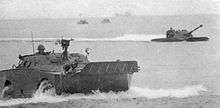

The vehicle's most unusual feature are the four additional chain-driven belly wheels, which are lowered by the driver to allow trench crossing. The vehicle also has a tire pressure regulation system which later became standard in Soviet wheeled military vehicles. The initial version of the vehicle, the BRDM obr. 1957, had an open roof, but the next production model, the BRDM obr. 1958, added a roof with twin hatches over commander's and driver's station and two hatches at the rear.
The vehicle is a conventional 4×4 design, with a welded steel chassis, an engine at the front and crew compartment at the rear. The driver sits on the left, with the commander to his right. The vehicle is not fitted with an NBC system, and has no night-vision equipment by default. The vehicle has four infra-red driving lights and a single white light searchlight is mounted on the drivers side of the vehicle. When in combat BRDM-1's front windscreens are protected by armoured shutters with integral vision blocks. When the shutters are in their open position they protect driver and commander from being blinded by the sunlight and ensure that the windscreens won't be obscured by rain or snow. The GAZ-40PB V-8 gasoline engine is based on a US Dodge truck engine, and is coupled to a manual gearbox with four forward gears and one reverse with a single dry-plate clutch. The four additional belly wheels which can be lowered to improve the vehicles cross-country performance by reducing its ground pressure, and to allow it to cross trenches up to 1.2 meters wide. Tire pressure in the main tires can also be raised and lowered by the driver for better performance.
The vehicle is fully amphibious, a trim board is raised at the front of the vehicle before entering the water to improve vehicle's stability and displacement in water and prevent the water from flooding the bow. In the water the vehicle is propelled by a single rear-mounted water-jet. The water jet is powered by the main engine which drives a four-bladed propeller. The water jet outlet is protected by an armoured shutter while on land. This shutter must be removed before entering water. While the trim board in the front is in its travelling position it serves as additional armour.
The BRDM-1 has a maximum armour thickness of 10 mm. This is sufficient for protection against small arms fire and small shell fragments but not against larger artillery fragments and 0.50 in (13 mm) machine gun fire. The BRDM-1-series tires are unarmoured and are particularly vulnerable to puncture from fire of all kinds.[3]
The BRDM obr. 1959 was normally armed with a single 7.62 mm SGMB medium machine gun mounted at the front of the hull for which 1,250 rounds of ammunition were carried. The BRDM-2 obr. 1960 also had mountings for two more 7.62 mm SGMB medium machine guns on the sides of the roof however usually only one machine gun was mounted even though it was possible to mount machine guns in all three mounting points. Later the 12.7 mm DShK 1938/46 heavy machine gun or 14.5 mm KPV heavy machine gun replaced the 7.62 mm SGMB medium machine gun in the front while an additional 7.62 mm SGMB medium machine gun was mounted on the rear. It was still possible to mount the other two 7.62 mm SGMB medium machine guns on the sides of the vehicle.
The Soviet Army however disliked the vehicle for several reasons. The vehicle had no turret and to operate the armament the gunner had to open a hatch and expose himself to enemy fire. The vehicle also didn't have any kind of special sights which undermined its usability as a reconnaissance vehicle. These drawbacks encouraged the design team to create a new vehicle which would suit modern battlefield.[4]
Service history
BRDM-1 entered service with Soviet Army in 1957. Production continued until 1966 when it was completely replaced on production lines by the BRDM-2. It was used for several years until it was completely replaced by the BRDM-2. Czechoslovakia used BRDM-1 obr. 1958. Hungary also used BRDM-1 and designed its own armoured scout car based on BRDM-1, FUG.[5]
Poland started receiving BRDM-1 armoured scout cars in early 1960s. Later it also received 2P27 and 9P110 ATGM launch vehicles. BRDM-1 were used by the subunits of different branches of LWP (they saw most service with the reconnaissance units) while the 2P27 were used by anti-tank subunits of motorized units. Poland also fielded the BRDM-RKh as part of the NBC reconnaissance units. BRDM-1, BRDM-RKh, 2P27 and 9P110 were later replaced by their BRDM-2 equivalents.[1]
BRDM-1 was also in service with armies of four other Warsaw pact members: Albania, Bulgaria, Romania and East Germany. Cuba also bought a number of BRDM-1. Like almost all Soviet equipment BRDM-1 was also sold to many Arab and African countries.
Today less than 600 remain in the reserve forces of a number of countries.
Variants
Former East Germany
- SPW-40P – East German designator for unarmed BRDM-1.[5]
- SPW-40PA – East German version of armed BRDM-1 with larger IR headlights.[5]
- 9P111 – East German version of the 9P110. Unlike the Soviet 9P110 the East German varriant has additional protection for headlights and two mounts for fuel canisters in the rear of the vehicle.[5]
Hungary
- FUG – FÚG (Felderítő Úszó Gépkocsi - "amphibious reconnaissance vehicle") – Due to the similarities with BRDM-1, the D-442 FUG is sometimes mistaken for a BRDM-1 modification, though several important differences reflect an independence of the design. It has two waterjets for amphibious propulsion instead of one as in BDRM-1, powered by a Hungarian-made Csepel six-cylinder diesel engine, and the engine compartment is in the rear. It was produced by Hungary at Rába Magyar Vagon és Gépgyár and used by Hungary, Poland, and Czechoslovakia. It is also known as D-442.[6]
USSR

- BRDM-1 obr. 1957 – standard unarmed amphibious armoured scout car with an opened top. It was also known under designation BTR-40P.[5]
- BRDM-1 obr. 1958 – standard unarmed amphibious armoured scout car fitted with a roof with two hatches at the front. It was also known under designation BTR-40P.[5]
- BRDM-1 obr. 1959 – standard amphibious armoured scout car fitted with one 7.62 mm medium machine gun pintle mount at the front of the roof. It was also known under designation BTR-40P.[5]
- BRDM-1 obr. 1960 – standard amphibious armoured scout car fitted with three 7.62 mm medium machine guns pintle mounts: one at the front of the roof and one on each side of the superstructure. It was possible to mount machine guns at all three mounting positions at the same time but it was rarely practiced. It was also known under designation BTR-40P.[5]
- BRDM-2 – Further development of BRDM-1.
- BRDM-1 obr. 1960 – standard amphibious armoured scout car fitted with three 7.62 mm medium machine guns pintle mounts: one at the front of the roof and one on each side of the superstructure. It was possible to mount machine guns at all three mounting positions at the same time but it was rarely practiced. It was also known under designation BTR-40P.[5]
- BRDM-1 obr. 1959 – standard amphibious armoured scout car fitted with one 7.62 mm medium machine gun pintle mount at the front of the roof. It was also known under designation BTR-40P.[5]
- BRDM-1 obr. 1958 – standard unarmed amphibious armoured scout car fitted with a roof with two hatches at the front. It was also known under designation BTR-40P.[5]
- BRDM-RKh – NBC reconnaissance vehicle with two KZO-2 flag dispensers and with several detection devices including the DP dosimeter and PCHR-54 semi-automatic detection device. It was also known under designation BTR-40P-Rkh.
- BRDM-1U – Command vehicle with additional R-112 radios and 3 whip antennas. It was also known under designations BTR-40PU and BRDM-u.[5]
- BRDM-1U modified for use by transport units. This variant has a rear traffic light.[5]
- 2P27 – Tank destroyer equipped with 2K16 launcher for 3×3M6 "Shmel" (AT-1 Snapper) ATGM. The rear of the vehicle has been completely rebuild. The space for the reconnaissance team and the reconnaissance equipment is replaced by a superstructure in which a launcher with three 3M6 "Shmel" missiles is carried. While on the move the launcher is hidden inside of the superstructure and is protected by its armour. Thanks to this when the launcher is not deployed the 2P27 looks almost exactly as a normal BRDM-1. It even still has four firing ports on both sides of the vehicle even though it is impossible to operate them in this vehicle. It is almost impossible to distinguish the two vehicles from a long distance. When the vehicle stops the rocket launcher can be deployed. This is done by taking off two the steel panels on top of the launcher's compartment, opening a flap in the rear of the superstructure and elevating the launcher. After that the launcher can be immediately fired. Developed in 1958.[5]
- 2P32 – Tank destroyer equipped with 2K8 launcher for 4×9M11 "Falanga" (AT-2 Swatter) ATGM. The vehicle is exactly the same as the 2P27 but has a different missile launcher which uses four 9M11 "Falanga". It is a logical successor to the 2P27, entered service in 1962.[5]
- 9P110 – Tank destroyer equipped with 9К14М launcher for 6×9M14 "Malyutka" (AT-3 Sagger) ATGM. Production started in 1963. This vehicle, just like 2P27 and 2P32, has superstructure in the rear where the missile launcher is hidden. However, as the launcher's compartment is smaller the vehicle retains the characteristic rear of the BRDM-1. The mechanism of deploying the launcher was also simplified. Now it is just a matter of finding a suitable site and elevating the launcher. One of the visually distinguishing features between this tank destroyer from 2P27 and 2P32 after the launcher has been deployed is the fact that the latter ones don't have the overhead protection for the launcher once it's in firing position.[5]
Operators

Current operators
-
 Afghanistan – 50 BRDM-1s ordered in 1970 from Soviet Union and delivered between 1970 and 1971 (the vehicles were previously in Soviet service).[7]
Afghanistan – 50 BRDM-1s ordered in 1970 from Soviet Union and delivered between 1970 and 1971 (the vehicles were previously in Soviet service).[7] -
 Albania – 15 BRDM-1s ordered in 1959 from Soviet Union and delivered in 1960.[7] 15 BRDM-1s are currently in service.
Albania – 15 BRDM-1s ordered in 1959 from Soviet Union and delivered in 1960.[7] 15 BRDM-1s are currently in service. -
 Angola – 120 BRDM-1s.[8]
Angola – 120 BRDM-1s.[8] -
 Belarus – 142 BRDM-1s.[9]
Belarus – 142 BRDM-1s.[9] -
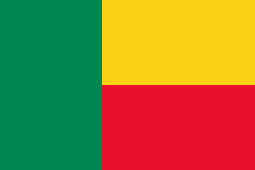 Benin –
Benin – -
 Cape Verde –
Cape Verde – -
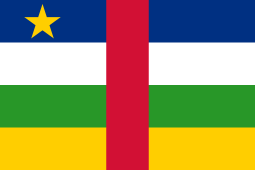 Central African Republic –
Central African Republic – -
 Chad –
Chad – -
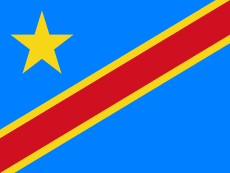 Democratic Republic of the Congo –
Democratic Republic of the Congo – -
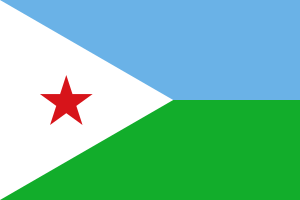 Djibouti –
Djibouti – -
 Egypt – 200 BRDM-1s ordered in 1967 from Soviet Union and delivered between 1968 and 1969 (the vehicles were previously in Soviet service).[7] 200 BRDM-1s are currently in service.[10]
Egypt – 200 BRDM-1s ordered in 1967 from Soviet Union and delivered between 1968 and 1969 (the vehicles were previously in Soviet service).[7] 200 BRDM-1s are currently in service.[10] -
 Equatorial Guinea –
Equatorial Guinea – -
 Eritrea –
Eritrea – -
 Ethiopia – 50 BRDM-1s ordered in 1977 from Soviet Union and delivered in 1977 (the vehicles were previously in Soviet service).[7] Currently 65 BRDM-1s are in service.
Ethiopia – 50 BRDM-1s ordered in 1977 from Soviet Union and delivered in 1977 (the vehicles were previously in Soviet service).[7] Currently 65 BRDM-1s are in service. -
 Guinea – 10 BRDM-1s ordered in 1968 from Soviet Union and delivered in 1969 (the vehicles were probably second-hand).[7]
Guinea – 10 BRDM-1s ordered in 1968 from Soviet Union and delivered in 1969 (the vehicles were probably second-hand).[7] -
 Guinea-Bissau –
Guinea-Bissau – -
 Hungary –
Hungary – -
 Indonesia – 10 BRDM-1s ordered in 1962 from Soviet Union and delivered in 1963.[7]
Indonesia – 10 BRDM-1s ordered in 1962 from Soviet Union and delivered in 1963.[7] -
 Libya – 60 BRDM-1s ordered in 1977 from Soviet Union and delivered in 1978 (the vehicles were previously in Soviet service).[7]
Libya – 60 BRDM-1s ordered in 1977 from Soviet Union and delivered in 1978 (the vehicles were previously in Soviet service).[7] -
 Madagascar –
Madagascar – -
 Malawi –
Malawi – -
 Mali –
Mali – -
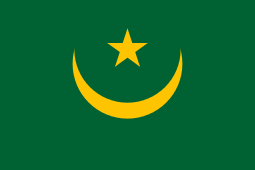 Mauritania –
Mauritania – -
 Mongolia – 9P110[5]
Mongolia – 9P110[5] -
 Morocco –
Morocco – -
 Mozambique – 20 BRDM-1s ordered in 1976 from Soviet Union and delivered in 1977 (the vehicles were previously in Soviet service). 31 BRDM-1s ordered in 1979 from Soviet Union and delivered between 1979 and 1980 (the vehicles were previously in Soviet service).[7] 30 BRDM-1s and BRDM-2s were in service as of 2001 however the serviceability of Mozambique's army equipment, mostly the Soviet equipment, is on a level of 10% or less.[11]
Mozambique – 20 BRDM-1s ordered in 1976 from Soviet Union and delivered in 1977 (the vehicles were previously in Soviet service). 31 BRDM-1s ordered in 1979 from Soviet Union and delivered between 1979 and 1980 (the vehicles were previously in Soviet service).[7] 30 BRDM-1s and BRDM-2s were in service as of 2001 however the serviceability of Mozambique's army equipment, mostly the Soviet equipment, is on a level of 10% or less.[11] -
 Nicaragua –
Nicaragua – -
 Peru – 12 BRDM-1s ordered in 1973 from Soviet Union and delivered in 1974 (the vehicles were probably previously in Soviet service).[7]
Peru – 12 BRDM-1s ordered in 1973 from Soviet Union and delivered in 1974 (the vehicles were probably previously in Soviet service).[7] -
 Romania – 9P110
Romania – 9P110 -
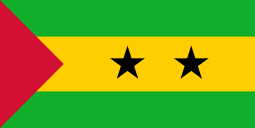 São Tomé and Príncipe –
São Tomé and Príncipe – -
 Seychelles –
Seychelles – -
 Somalia –
Somalia – -
 Sudan – 5 BRDM-1s or BTR-40s ordered in 1958 from Soviet Union and delivered in 1960.[7]
Sudan – 5 BRDM-1s or BTR-40s ordered in 1958 from Soviet Union and delivered in 1960.[7] -
 Syria – 100 BRDM-1s ordered in 1970 from Soviet Union and delivered between 1970 and 1971 (the vehicles were probably previously in Soviet service).[7]
Syria – 100 BRDM-1s ordered in 1970 from Soviet Union and delivered between 1970 and 1971 (the vehicles were probably previously in Soviet service).[7] -
 Tanzania – 30 BRDM-1s ordered in 1964 from Soviet Union and delivered in 1965 (the vehicles were previously in Soviet service).[7]
Tanzania – 30 BRDM-1s ordered in 1964 from Soviet Union and delivered in 1965 (the vehicles were previously in Soviet service).[7] -
 Ukraine – BRDM-1[12]
Ukraine – BRDM-1[12] -
 Uganda – 62 BRDM-1s ordered in 1971 from Soviet Union and delivered in 1973 (the vehicles were previously in Soviet service). 36 BRDM-1s ordered in 1973 from Soviet Union and delivered in 1974 (the vehicles were previously in Soviet service).[7]
Uganda – 62 BRDM-1s ordered in 1971 from Soviet Union and delivered in 1973 (the vehicles were previously in Soviet service). 36 BRDM-1s ordered in 1973 from Soviet Union and delivered in 1974 (the vehicles were previously in Soviet service).[7] -
 Vietnam –
Vietnam – -
 Yemen –
Yemen – -
 Zambia – 44 BRDM-1s ordered in 1980 from Soviet Union and delivered in 1980 (the vehicles were previously in Soviet service, part of a $72–100 million).[7]
Zambia – 44 BRDM-1s ordered in 1980 from Soviet Union and delivered in 1980 (the vehicles were previously in Soviet service, part of a $72–100 million).[7] -
 Zimbabwe – 20 BRDM-1s.[13]
Zimbabwe – 20 BRDM-1s.[13]
Former Operators
-
 Bulgaria – 150 BRDM-1s ordered in 1964 from Soviet Union and delivered between 1965 and 1967.[7] Withdrawn from service in the 1980s and replaced with the BRDM-2.
Bulgaria – 150 BRDM-1s ordered in 1964 from Soviet Union and delivered between 1965 and 1967.[7] Withdrawn from service in the 1980s and replaced with the BRDM-2. -
 Czechoslovakia[5] – Replaced with BRDM-2.
Czechoslovakia[5] – Replaced with BRDM-2. -
 Cuba – 50 BRDM-1s ordered in 1966 from Soviet Union and delivered in 1966.[7]
Cuba – 50 BRDM-1s ordered in 1966 from Soviet Union and delivered in 1966.[7] -
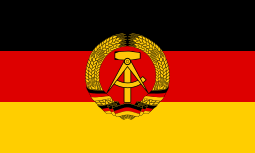 East Germany – 100 BRDM-1s ordered in 1959 from Soviet Union and delivered between 1960 and 1962.[7] Replaced with BRDM-2.
East Germany – 100 BRDM-1s ordered in 1959 from Soviet Union and delivered between 1960 and 1962.[7] Replaced with BRDM-2. -
 Iraq – Iraqi Regular Army operated 1,300 BRDM-1 and BRDM-2 armoured scout cars and vehicles based on them. All destroyed or scrapped.
Iraq – Iraqi Regular Army operated 1,300 BRDM-1 and BRDM-2 armoured scout cars and vehicles based on them. All destroyed or scrapped. -
 North Vietnam – 50 BRDM-1s ordered in 1963 from Soviet Union and delivered between 1963 and 1966.[7] Passed on to the successor state.
North Vietnam – 50 BRDM-1s ordered in 1963 from Soviet Union and delivered between 1963 and 1966.[7] Passed on to the successor state. -
 Poland – 800 BRDM-1s ordered in 1961 from Soviet Union and delivered between 1961 and 1964.[7] Replaced with BRDM-2. One was given to the Muzeum Wojska Polskiego (Polish Army Museum) in Warsaw.
Poland – 800 BRDM-1s ordered in 1961 from Soviet Union and delivered between 1961 and 1964.[7] Replaced with BRDM-2. One was given to the Muzeum Wojska Polskiego (Polish Army Museum) in Warsaw. -
 Serbia – 30 BRDM-1s.[14]
Serbia – 30 BRDM-1s.[14] -
 Soviet Union – Passed on to the successor states.
Soviet Union – Passed on to the successor states. -
 Yugoslavia – BRDM-1 and 9P27.[5][15] Passed on to successor states.
Yugoslavia – BRDM-1 and 9P27.[5][15] Passed on to successor states.
See also
| Wikimedia Commons has media related to BRDM-1. |
References
- ↑ Driver, co-driver and commander for BRDM-1 obr. 1957 and BRDM-1 obr. 1958
Driver, co-driver, commander, and gunner for BRDM-1 obr. 1959, BRDM-1 obr. 1960 and late BRDM-1
- 1 2 3 4 "Pancerni 2"
- ↑ "Archived copy" (PDF). Archived from the original (PDF) on 2008-02-27. Retrieved 2006-11-03.
- ↑ "Pancerni 1".
- ↑ "BRDM-2". www.militarium.net.
- 1 2 3 4 5 6 7 8 9 10 11 12 13 14 15 16 "JED The Military Equipment Directory"
- ↑
- 1 2 3 4 5 6 7 8 9 10 11 12 13 14 15 16 17 18 19 SIPRI Arms Transfers Database
- ↑ Angolan army armyrecognition.com
- ↑ Belorussian army armyrecognition.com
- ↑ Egyptian army armyrecognition.com
- ↑ Mozambique – Security Information
- ↑ Ukrainian army armyrecognition.com
- ↑ Zimbabwean army armyrecognition.com
- ↑ Serbian army armyrecognition.com
- ↑ Yugoslav armor
- Description and pictures BRDM-1 to Army Recognition site
- Janes Armour and Artillery 2005–2006
- http://armoured.vif2.ru/brdm.htm